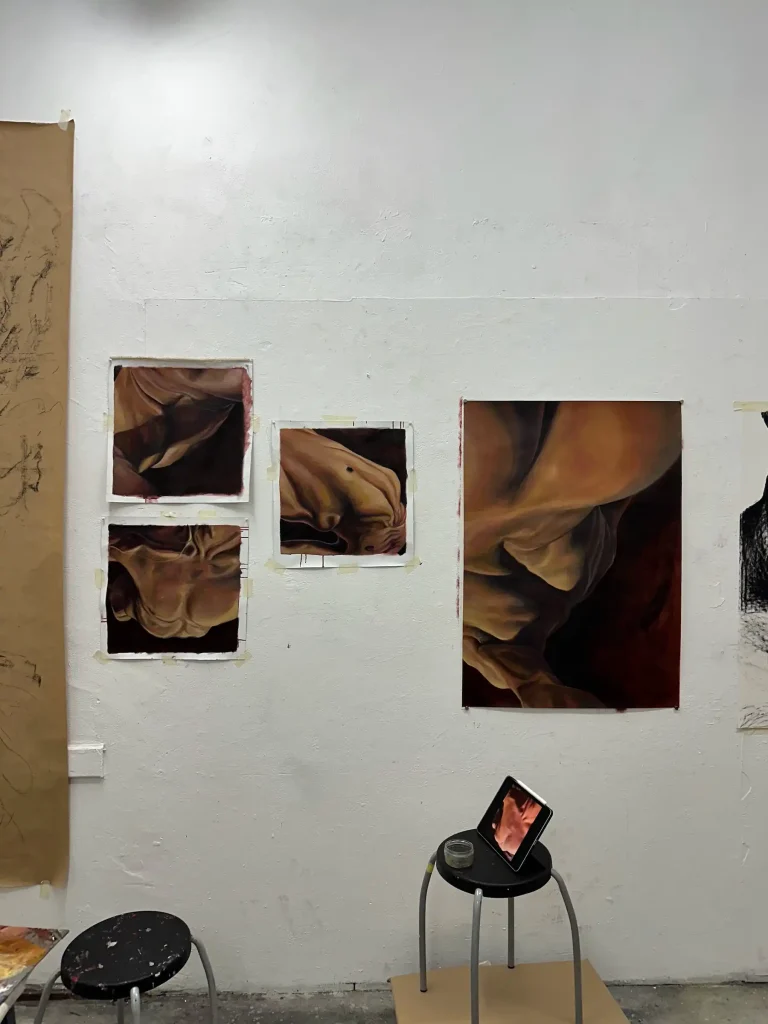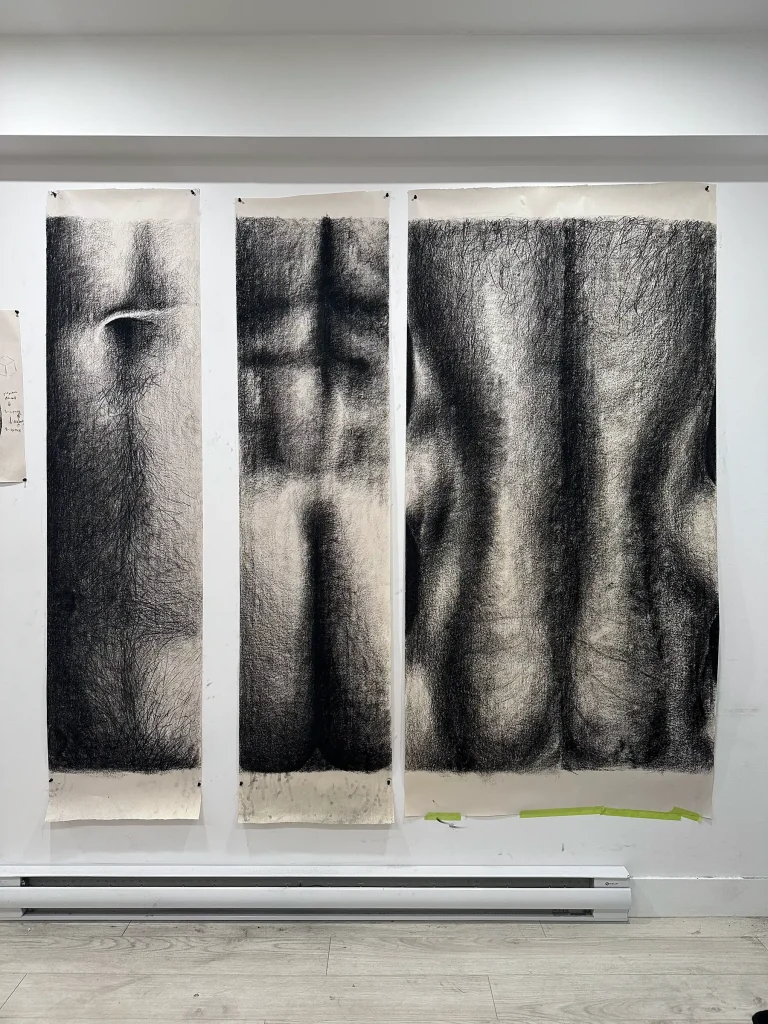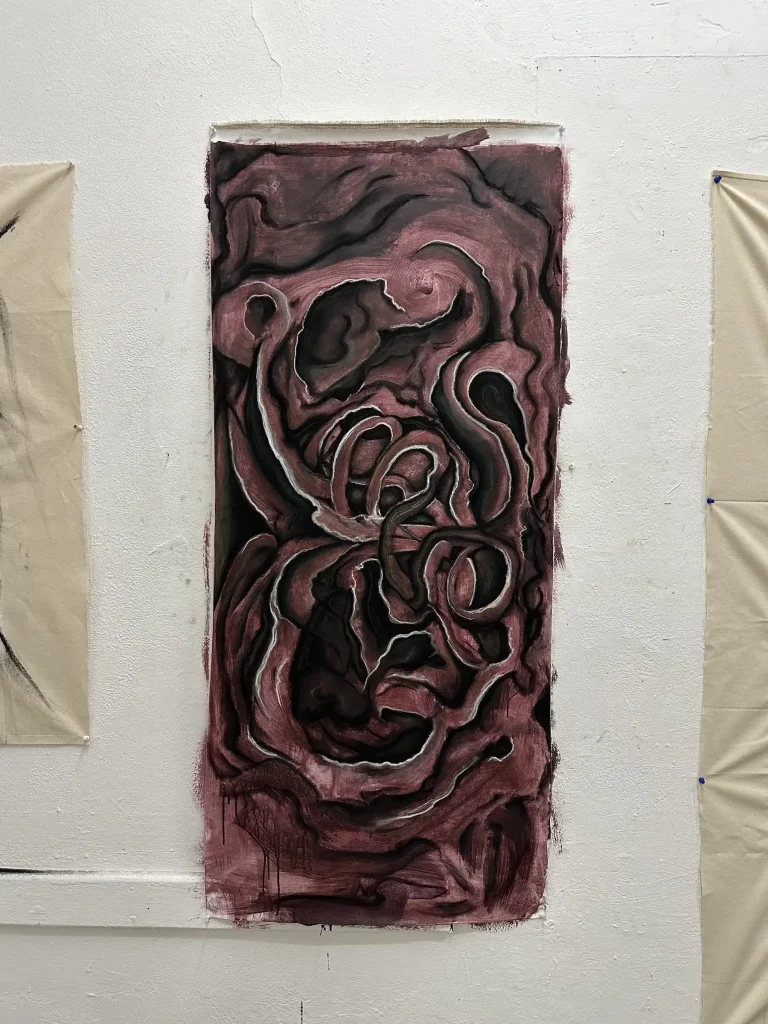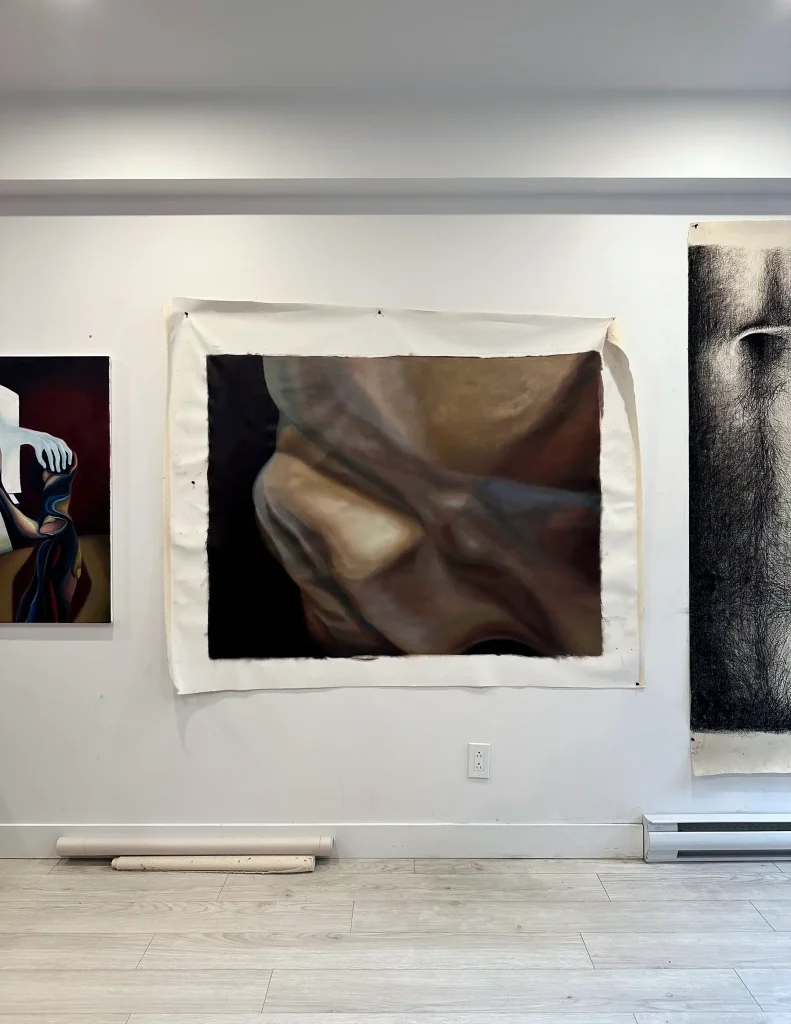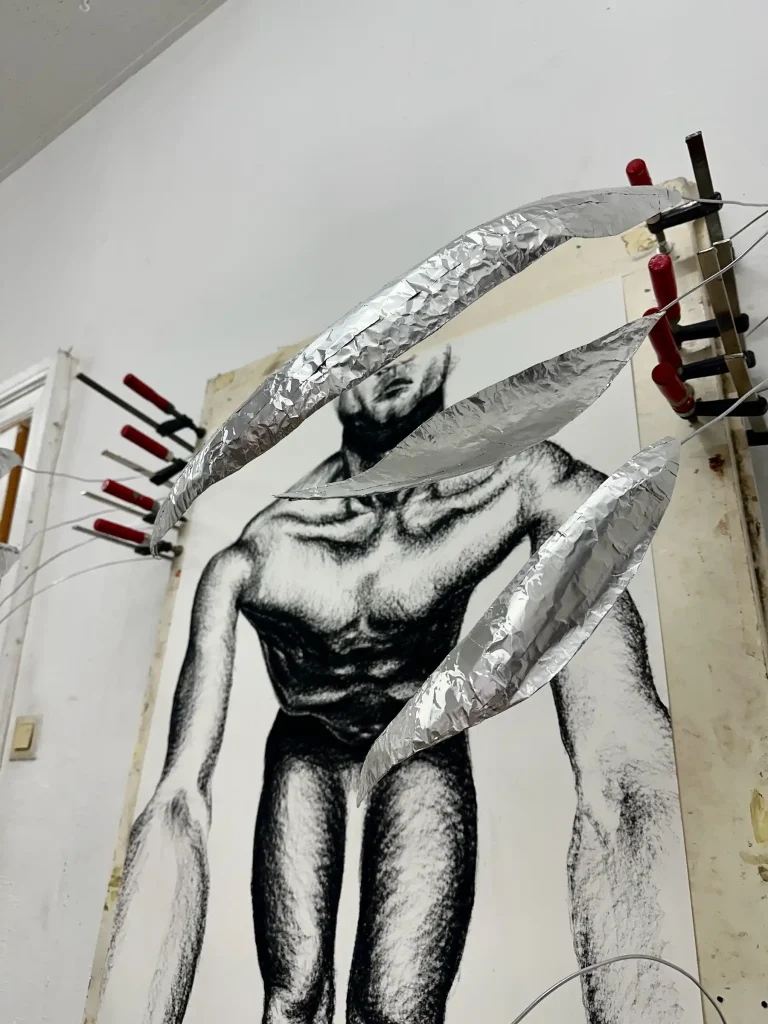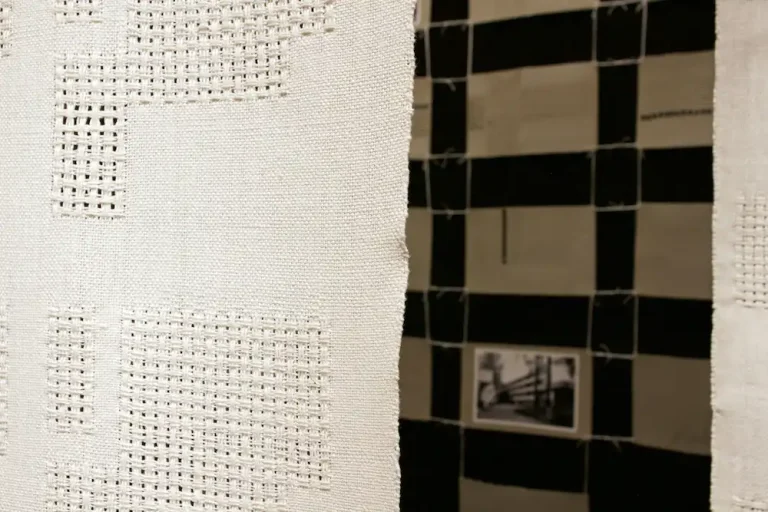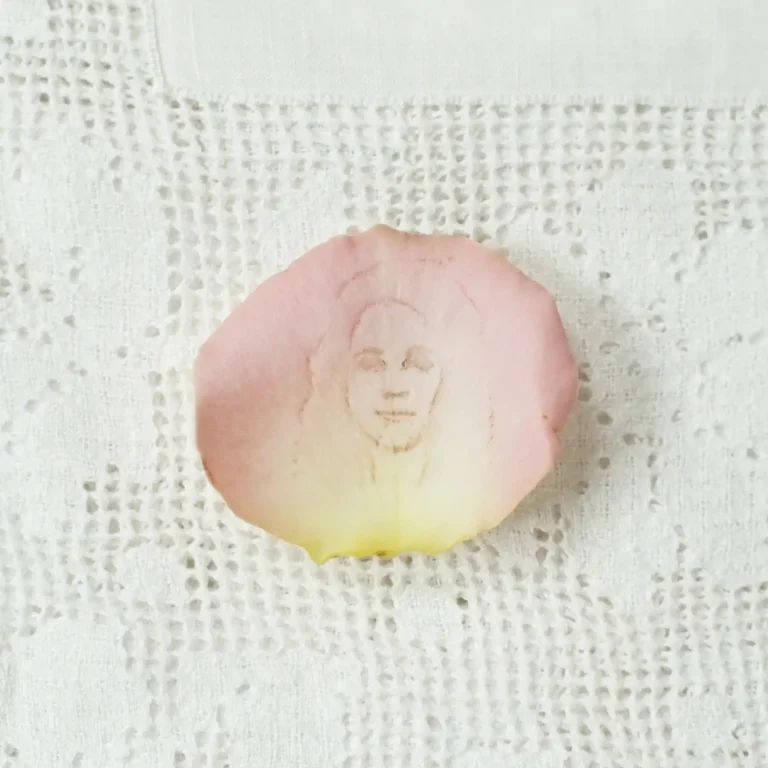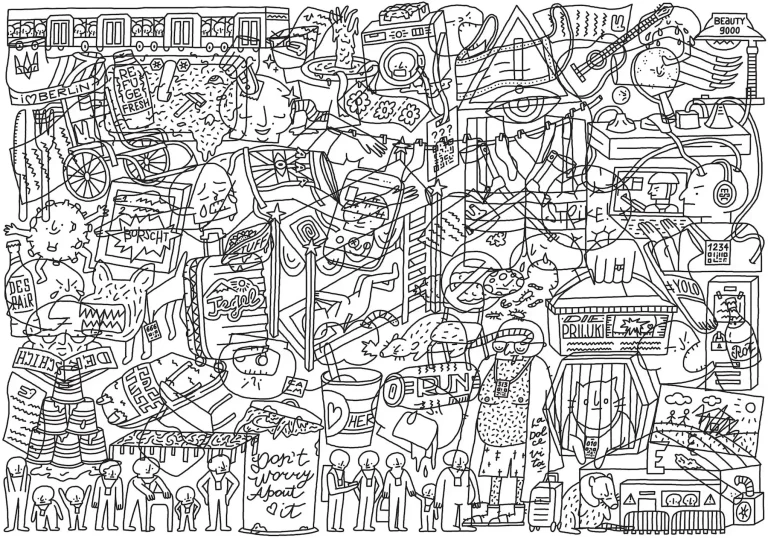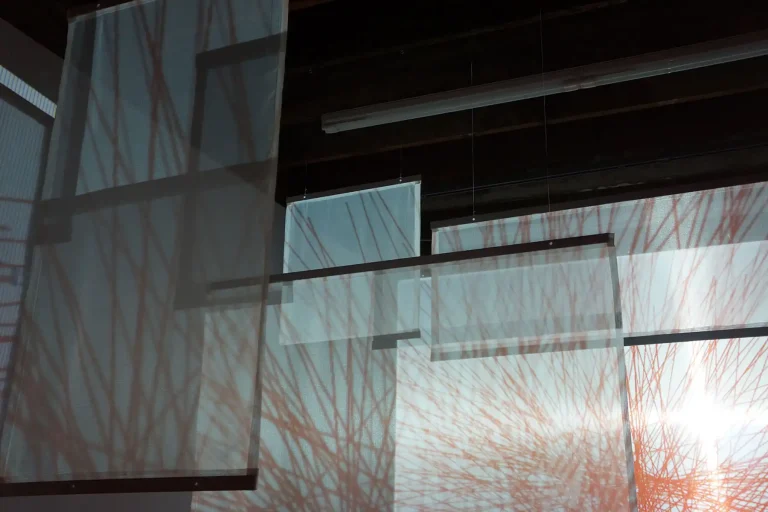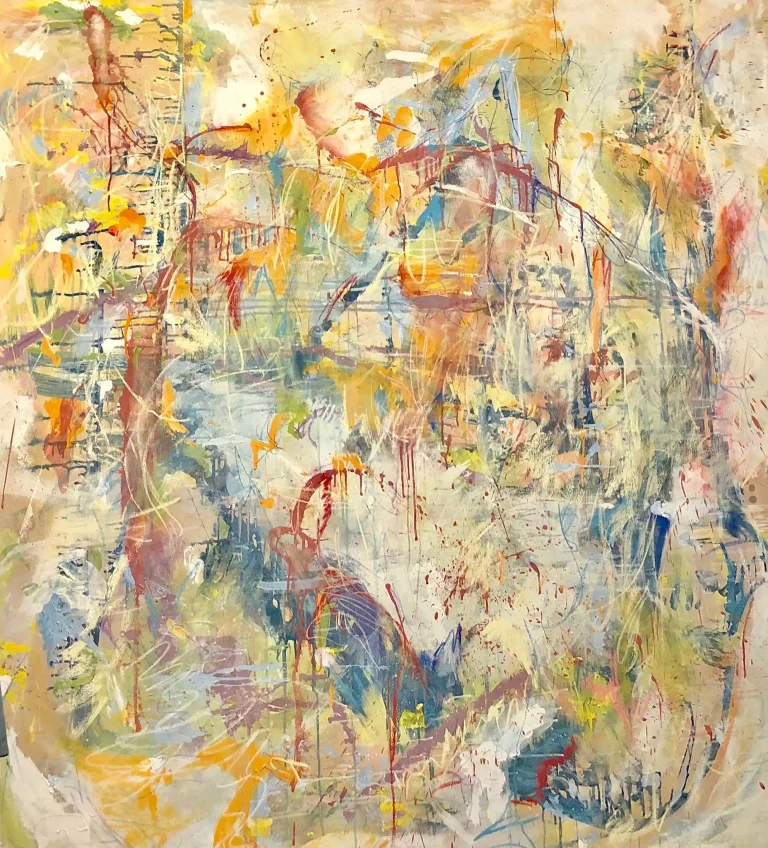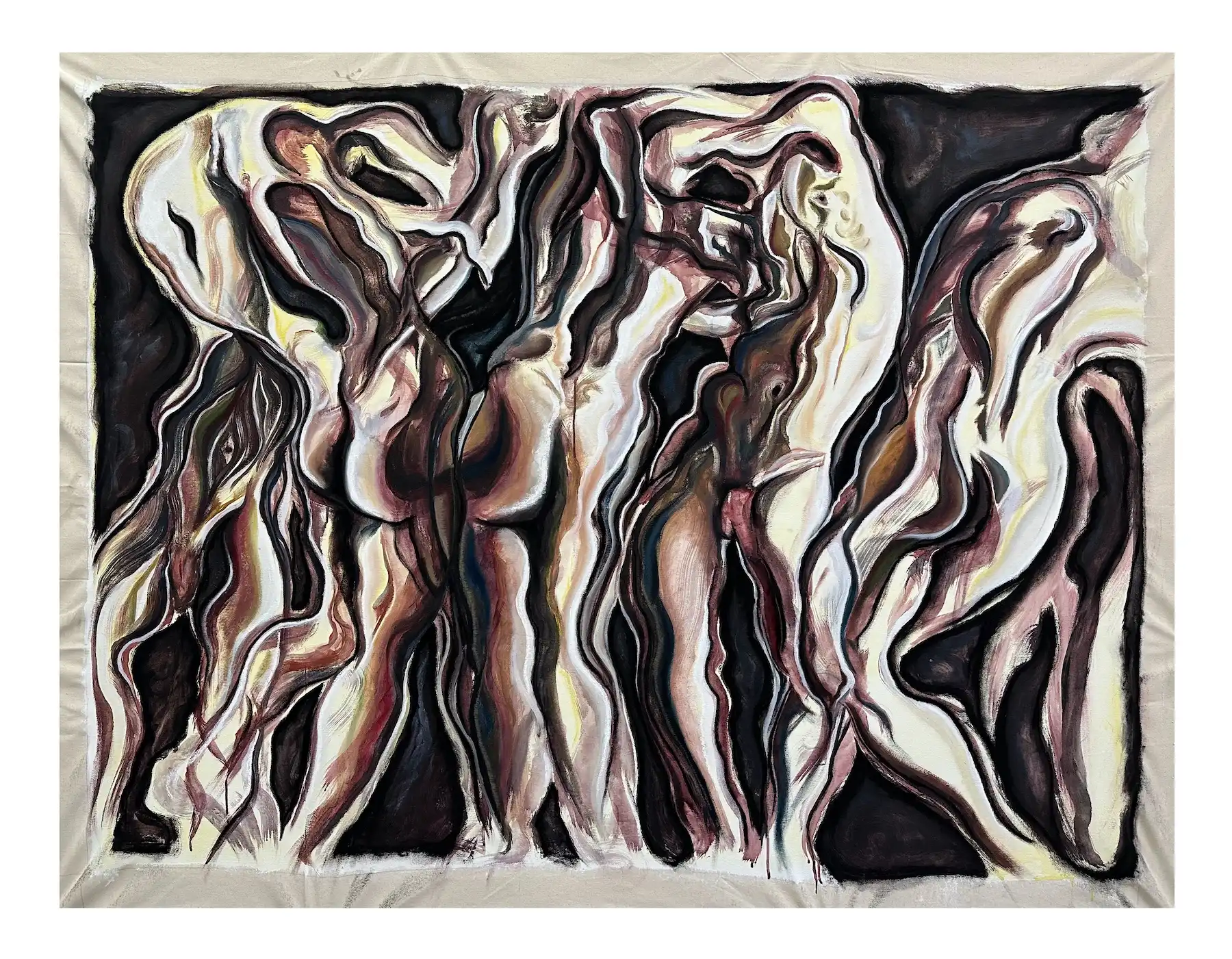
Darren Guo Li is GlogauAIR resident
from January, 2025 to March, 2025
Darren’s practice explores the human body as a cybernetic ecosystem, blending scientific and queer thought with interdisciplinary art. With a background in Quantitative Biology, his work deconstructs and distorts the human form—digitally, mathematically, and anatomically—to examine its role in technological evolution and societal power structures, including Asian representation in new media.
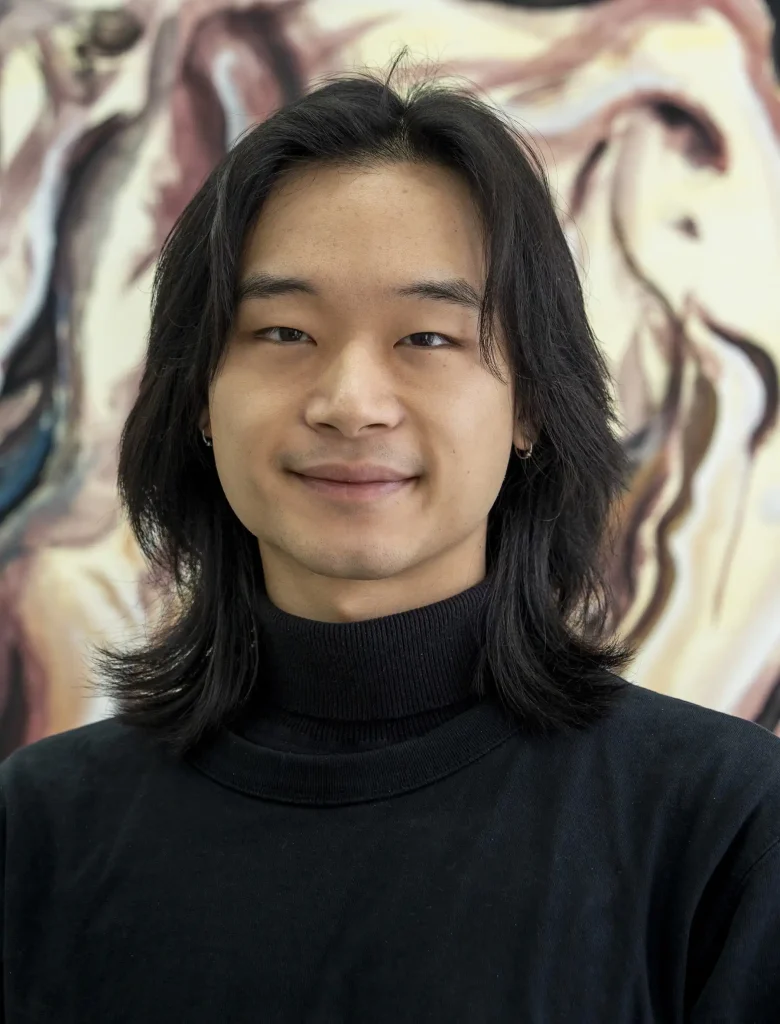
Meet the Artist
Can you please introduce yourself and tell us about your background and artistic practice?
I’m a Chinese-Canadian artist. I just graduated from my bachelor’s studies in Montreal at McGill last summer. I studied quantitative biology, but always had an art practice on the side, more of a hobby. After working a bit in industry, I realized that I wanted to pursue my practice full-time. So this is what led me to this residency.
My practice combines scientific thinking with queer thought. I really like interdisciplinarity. My studies were also very interdisciplinary covering theoretical math, biology, chemistry, computer science, and some sociology, urban planning, things like that. I realized they’re all interconnected and the ideas can influence each other. There’s a lot of interpretive potential when you combine these ideas. And I think representing them with art, especially, opens up many new ways to communicate these ideas.
Some concepts and theories that I’m quite interested in right now are post-humanism and new materialism. new materialism itself very broadly states that atoms and metaphysical matter have agency as well. We exist and co-emerge relationally with other entities, organic or not organic, technology or nature, human and non-human. I’m hoping to use these theories to explore the human form. Being able to deconstruct the human form, or dissolve it in a way that reflects how we exist in the world. Whether through computer algorithms, visually, or anatomically. Maybe mathematically, which is what I’m looking at right now. To reflect how there’s so many parallels between, for example, math and our identities. How both are very fluid things. Especially from a queer Asian perspective, it represents for me the dissolving, almost, and the fluidity of our identity as queer people. To survive within external systems of power that define the parameters of our existence. It is about empowerment and finding new ways to embody these aspects of your identity and how you interact with the world; finding new agency in your body in relation to your identity.
Can you tell us about the mediums you work with?
I grew up taking classes in drawing. I’m historically an oil painter. but now I’m in a period of experimentation. I’m playing more with mixed media: pastels, charcoal, acrylic. I’m also experimenting a bit with sculpture, to bring these ideas into the third dimension.
I started using digital and technological materials and methods. I’ve been coding in Python, and doing some rendering in Blender to represent the body mathematically and algorithmically. I’ve used the computer to algorithmically deconstruct abstract images of my body into datasets, essentially decoding the biological structure and tensegrity of my body. This virtually, or metaphysically deconstructs the body, opening the potential to be manipulated through computation and a code.
Now I’m modeling with Python again, models we call strange attractors. Which is from chaos theory and are constructed from dynamic mathematical systems. Here, points are bounded and they move unpredictably in the system and create these very abstract shapes. I find this mirrors New Materialist ideas, in that we are bound within chaotic social, natural, and computational systems, and relationally emerge, or co-become, out of them.
I am exploring how the organic, the digital, the technological, and the metaphysical are entangled with each other. If I’m representing my organic body with a computer software that’s now translating into a map, a graph. I am finding a way to plot these crazy shapes with
some kind of parameters that it derives from my body. It’s kind of showing how we can interconnect them and it reflects how they’re interconnected in society nowadays.
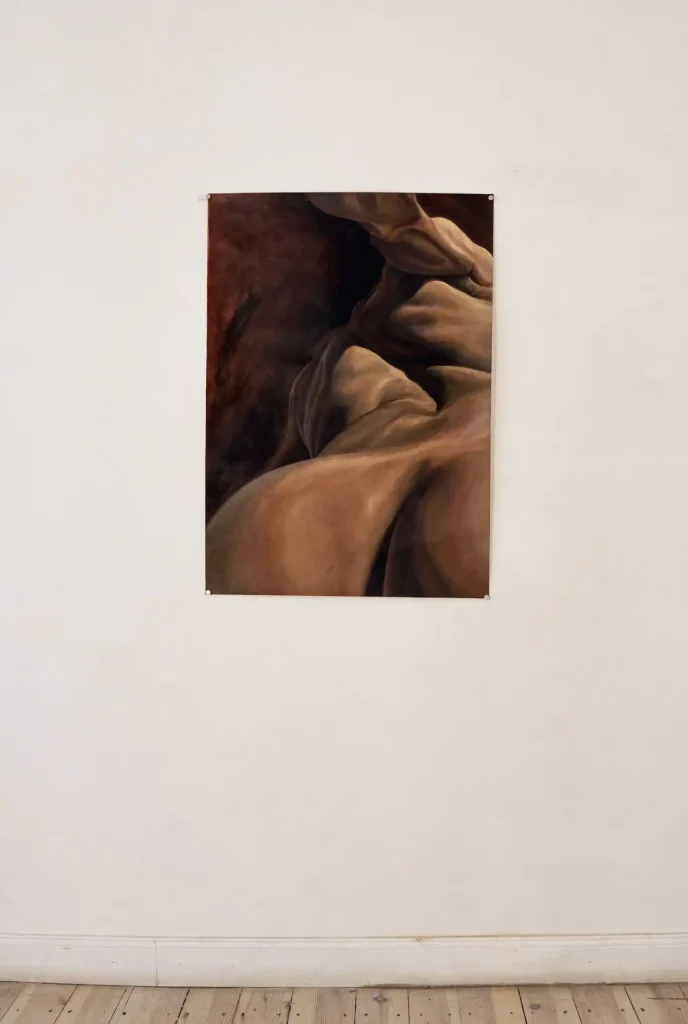
What are you working on here at GlogauAIR?
It started with wanting to look at skin itself. I realized that when you look at skin, you’re also inherently looking at the human form and underlying structures. I started thinking, first, visually, as a first step. Then I made a sculpture that kind of encloses my body, a charcoal drawing of my body. I called it a dissolved or deconstructed body as armor. Because it’s representing how we deconstruct ourselves and how we’re the ethnic queer identity is inherently fluid. It deals with how East Asians and Chinese people have been represented in the media. For example, film and commercial media, where we’re almost always stereotyped and that’s very toxic for the people in my community and for myself personally. Then it moved on to me wanting to explore abstraction. I’ve always had this idea of the body as a landscape. I know that in geography and math, we use computer programs to create topologies, which are kind of like maps that show the different levels and heights of things. I did that with my body for the showcase window, which was a good deadline to have that done by.
The next step was that I’ve always wanted to incorporate chaos theory and nonlinear dynamics because it was an interesting class that I took in my university. But I just didn’t really know how to do it. Then I relearned it and I learned how to code these models. Now I’m hoping to combine this with the human form in a different way. But it’s still very early stages of the research and the experimentation.
I’m also hoping to construct some sculptures and maybe a lot more mixed media work on canvas. So I have more freedom.
Are there any artists or writers who have influenced your work or who you really love?
I think the first thing would be the post-humanist authors. Donna Haraway and Preciado.
I think Preciado offers a lot of really interesting insights with his writing. Karen Barad, who I’m reading now, is at the forefront of the new materialist field of philosophy, which is very interesting. And then some artists who inspire me are maybe John Coplans. He photographs his body, but in a very abstract way. And it’s just him naked, headless. It kind of deconstructs the idea of maleness and masculinity. I really like Ivana Basic. She makes very extraterrestrial sculptures, and they’re very cool. They’re very organically shaped, but they’re made with glass and different materials, and they’re huge. Sometimes they’re robotic, so they move and they do cool things. It’s very interesting. They showed me how limitless sculpture can be.
Was there any specific reason you chose a residency in Berlin?
I think there were a few. The first was that the city itself, I think, is fantastic. It’s very cultural. There’s a lot of things to do and a lot of people to meet who have very new ideas. I feel like it’s one of the cities that has more of a cultural economy rather than a very commercial art scene. Even though it’s quite professionalized now, I feel it’s quite open.
You can express yourself more freely than in Paris, for example, which is where I was before. And then second, I have plans to apply for a master’s program. So I was looking for residencies for the beginning of this year, for these three months, and the deadlines are at the end of March. It was the first time I would be able to immerse myself in my practice and really devote myself full-time to creating. So I needed that shift to produce work and to meet other artists and get new ideas and learn how other people work so I could see what would work with me and how to mature in my practice. I think it’s a combination that gave me the perfect circumstances to grow as an artist but also to meet people and explore a new city.
How was it for you living in the residency with other artists?
I’ve really enjoyed it so far. I think the best part is definitely having the big walls and the studio right beside all the other studios. We share a kitchen and we get to really interact with the other artists and become friends with them. We’re spending all our time together on this floor. It really allows us to share ideas and help each other figure out new directions or give each other ideas and tips for how to work with new materials. I think that’s helpful. And everyone is very motivated to work, which is good. So there’s a very good energy to create.
Statement
My oil painting and drawing practice centers around interdisciplinary scientific and queer thought, drawing on knowledge from my Bachelor’s of Science in Quantitative Biology from McGill University while navigating the tension between scientific objectivity and artistic subjectivity. My work explores the human body as a cybernetic ecosystem, where survival demands our biological systems to evolve with technological advancements and societal power structures, like stereotyped Asian representations in new media. Visually deconstructing and distorting the human form—digitally, mathematically, anatomically—I attempt to represent the body both as a product of these power structures and a site of resistance to them.
GlogauAIR Project
The project will explore skin as a dynamic interface for the human condition through a series of 2D and 3D mixed media work. As our body’s most immediate physical barrier with the world, skin is an essential channel for the transmission of stimuli to and from our bodies, acting as a nexus of our internal (biological, psychological, heritage & identity) and external (social, environmental) domains. I will visually investigate skin’s physical and aesthetic characteristics (e.g. structure, coloration, texture) and the influence of various modes of representation, whether physical or digital, on our capacity to perceive skin and the human form. I hope to contextualize these representations within larger societal discourses.
CV Summary
FORMAL EDUCATION
- McGill University, Montreal, Quebec, Canada, 2020 – 2024
- B.Sc. Quantitative Biology | Minor: Business Strategy | GPA: 3.71 / 4.00
PUBLIC EXHIBITIONS AND PUBLICATIONS
- 2024 | Openbach Resident’s Exhibition[group exhibition]
Openbach Gallery, Paris, France, curated by Nicolas Boucher - 2024 Liminal Spaces[group exhibition]
McGill Fine Arts Commission, Montreal, Quebec, Canada - 2024 MOTION. The Emerging Art-scientist volume 1[publication]
creMAP, Montreal, Quebec, Canada - 2024 The Healing Exhibit [group exhibition]
McGill University Photography Students Society x McGill Arts Collective x McSway Poetry Collective, Montreal, Quebec, Canada - 2024 GRAIN volume 1, issue 3[zine]
MAI/SON, Montreal, Quebec, Canada - 2022 McGill Arts Collective Annual Exhibition[group exhibition]
McGill Arts Collective, Montreal, Quebec, Canada
COMMUNITY
- 2022 – 2024 McGill Arts Collective, Montreal, Quebec, Canada | Co-Founder and Co-President
McGill University’s first multi-disciplinary arts organization with the purpose of fostering a unique community built on cross-medium dialogue, experimentation, and collaboration. Helped to bridge the gap between McGill’s burgeoning fine arts scene and the wider Montreal scene.
RESIDENCIES
- GlogauAIR(upcoming), Berlin, Germany — January – March 2025
- Openbach, Paris, France — November – December 2024
PRESS
- November 2023 “McGill and AI: Student artists paint a picture of emerging landscapes”, The Tribune, Montreal, Quebec, Canada
- September 2022 “McGill Arts Collective champions collaboration in the campus art scene”, The Tribune, Montreal, Quebec, Canada
Gallery
